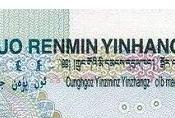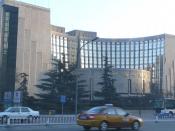1a. What are the major problems of banking reform in China?
Introduction
The development of the banking sector has been one of the primary factors for stimulating the economic growth of China since the late 1970s. However the country's banking sector experienced no significant reforms in the 1980s and lacked the institutional capacity to serve China's fast growing and increasingly market oriented economy.
Background
Before the 1979 reform
Before the founding of the People's Republic of China in 1949, China practiced the Soviet-style mono-bank system based on the Soviet model, which provide all the banking services in China, and banks were subordinated to the Ministry of Finance. The Chinese banking system included the central bank, three commercial banks, and numerous small, private banks and non-bank financial institutions. They acted only as its cashier and agent, and did not carry out intermediary function. The People's Bank of china (PBOC) combined the roles of central and commercial banking.
After 1978, the three commercial banks were separated from the operations of the central bank.
Three stages of Banking Reform
First period 1979 to 1984
The first period of banking reform started from 1979 to 1984. People's Bank of China (PBOC) and the four specialized banks were established, and they act as the central bank and as the dominant players in the banking system respectively. In 1983, the People's Bank of China (PBOC) was formally named the central bank in the People Republic of China.
Second Period late 1980s
The Industrial and Commercial Bank was established in January 1984 to take over the majority of banking offices and operations of the PBOC in major cities. Many regional banking institutions and non-bank financial institutions such as investment and trust companies, and finance companies of diversified ownership have also been added to those major coastal cities,


